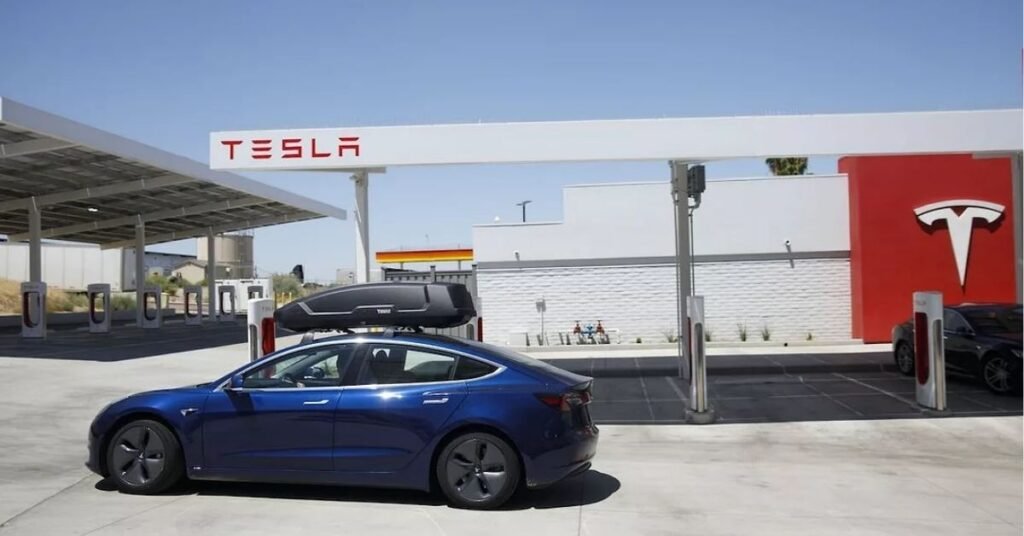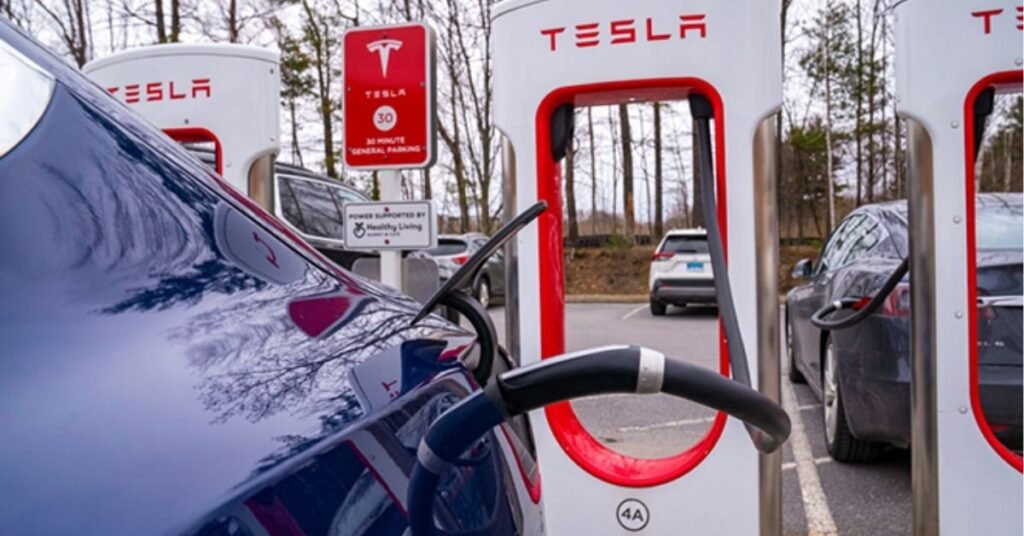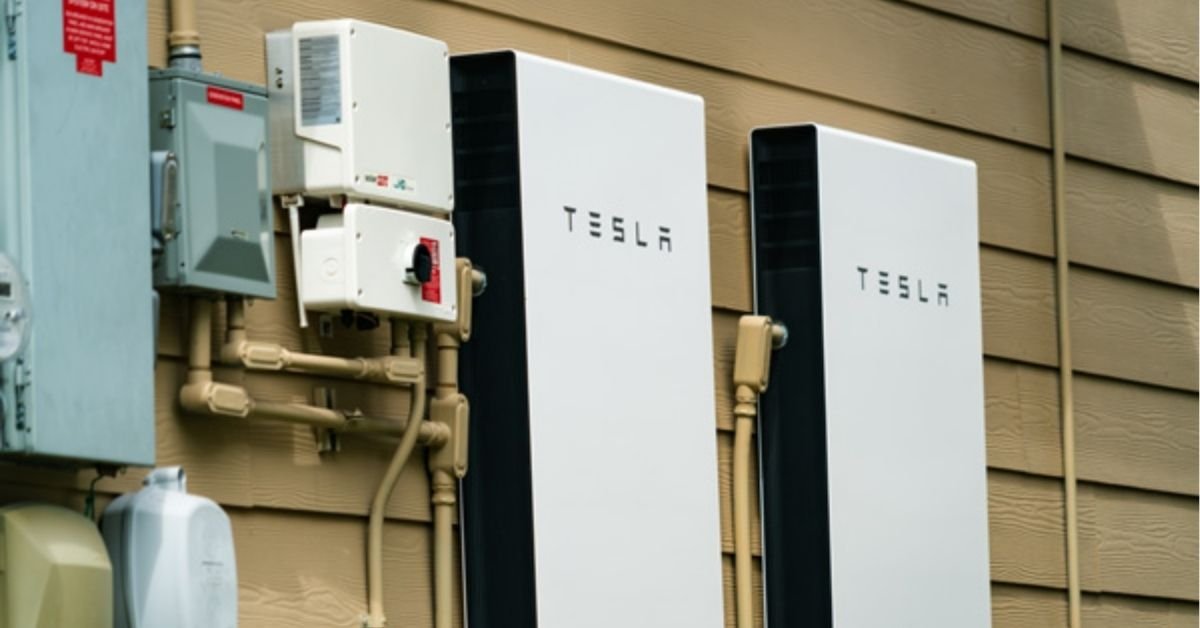In 2025, a Tesla Battery Cost Reduction breakthrough is poised to transform the electric vehicle (EV) landscape, slashing production costs and making EVs more affordable for millions.
Tesla’s innovative aluminum-ion battery technology and advanced manufacturing processes have driven battery costs down to $100 per kWh, a historic low, accelerating the path to price parity with gasoline-powered cars.
This milestone strengthens Tesla’s market dominance and signals a seismic shift for the global EV industry, promising broader adoption and a greener future.
Technological Innovations Behind the Breakthrough
The Tesla Battery Cost Reduction is anchored in groundbreaking advancements. Tesla’s new aluminum-ion batteries, leveraging abundant and cost-effective aluminum, offer up to 3,000 charge cycles and ultra-fast charging 80% capacity in 15 minutes while cutting production costs by 30% compared to traditional lithium-ion batteries.
The company’s adoption of dry electrode manufacturing at Gigafactory Texas reduces energy intensity by 29%, streamlining production and minimizing waste.
Tesla’s 4680 battery cells, with higher energy density and improved thermal management, further lower costs while boosting range to over 400 miles in models like the upcoming $25,000 compact EV, set for production in mid-2025.
In-house recycling, recovering 92% of battery materials like lithium and cobalt, creates a closed-loop system, reducing reliance on costly mining. These innovations collectively drive down costs, making EVs more accessible.

Impact on Tesla’s Market Position
The Tesla Battery Cost Reduction solidifies Tesla’s position as the EV market leader, despite its U.S. market share dipping to 46% in Q2 2025 from 55% in 2023.
With battery costs dropping from $130 per kWh in 2024 to $100 per kWh, Tesla can price its upcoming compact model at $25,000, targeting mass-market buyers and competing with affordable offerings from Hyundai and Kia.,
The Model Y, the world’s best-selling EV with 66,000 units sold in January 2025, benefits from these cost savings, maintaining its edge despite growing competition from BYD and General Motors.
Tesla’s vertical integration and in-house battery production give it a cost advantage over rivals reliant on external suppliers like CATL, positioning Tesla to dominate the affordable EV segment.
Implications for the Broader EV Industry
The Tesla Battery Cost Reduction is a catalyst for the EV industry, projected to grow from $328.73 billion in 2024 to $4.3 trillion by 2033, with a 33.1% CAGR. Lower battery costs are driving price parity, with one in five electric SUVs in the U.S. sold at a lower price than their gasoline counterparts in 2024.
This trend accelerates EV adoption, with U.S. EV sales reaching 1.6 million in 2024 and expected to hit 10% market share in 2025.
Competitors like Ford and GM are responding with aggressive financing and new models, but Tesla’s cost leadership pressures rivals to innovate or lose ground.
Globally, Chinese manufacturers like BYD benefit from even steeper battery price drops (30% in 2024), intensifying competition.
The push for affordability is also spurring growth in emerging markets like Thailand and Brazil, where EV sales surged 60% in 2024.
Industry Reactions and Expert Opinions
The Tesla Battery Cost Reduction has electrified the industry. “Tesla’s aluminum-ion breakthrough is a game-changer, making EVs cost-competitive with ICE vehicles years ahead of projections,” says Lisa Holloway, an automotive analyst at MotorTrend.
However, skepticism remains about scalability. Dr. Emily Chen, an EV technology professor at Stanford, cautions, “Mass production of aluminum-ion batteries is untested at scale, and supply chain constraints could delay impact.”
BloombergNEF notes that while Tesla leads, Chinese manufacturers’ lower-cost models challenge its global dominance. Industry leaders like Ford, facing $5.5 billion in EV losses in 2023, are now exploring partnerships to counter Tesla’s cost advantage.
Analysts predict Tesla’s innovations will force competitors to accelerate R&D, potentially sparking a “battery arms race” by 2030.

Market Trends and Challenges
The Tesla Battery Cost Reduction aligns with key market trends. Global battery prices fell 25% in 2024, driven by economies of scale and material innovations, with China leading at a 30% drop.
Government incentives, like U.S. tax credits of up to $7,500, further boost affordability, though their expiration in September 2025 could slow growth.
Challenges include supply chain vulnerabilities, particularly for aluminum and other minerals, and geopolitical risks in sourcing regions like the Democratic Republic of Congo.
Cybersecurity concerns in connected EVs and high initial investment costs for new battery tech also pose hurdles.
Despite these, the push for sustainable, closed-loop manufacturing and recycling is reshaping the industry for long-term growth.
A New Era of Affordable EVs
The Tesla Battery Cost Reduction marks a pivotal moment for electric vehicles, bringing the dream of affordable, sustainable transportation closer to reality.
With aluminum-ion batteries, advanced manufacturing, and a closed-loop recycling system, Tesla is driving down costs and accelerating EV adoption worldwide.
While challenges like supply chain risks and competition from Chinese manufacturers loom, Tesla’s innovations set a new standard for the industry.
As the EV market surges toward a $4.3 trillion valuation by 2033, the Tesla Battery Cost Reduction is not just a breakthrough; it’s a bold step toward a cleaner, more accessible future, redefining mobility for generations to come.
@teslaownersSV 🔧 How to Cut Tesla Battery Costs Significantly
— RAPHAEL MICHAEL X (@raphamusk1) August 18, 2025
1. Cathode Innovations
Move from Nickel-rich to LFP (Lithium Iron Phosphate):
LFP has lower energy density but is way cheaper (no cobalt/nickel) and safer.
→ Already 30–40% cost reduction per kWh.
High-Manganese…
Also Read: Stunning Tesla Roadster Performance Breakthrough Redefines Electric Speed

Abdul Basit is a US-based tech writer who covers Apple innovations, Tesla’s EV growth, AI breakthroughs, smartphone trends, and app reviews for global readers.
